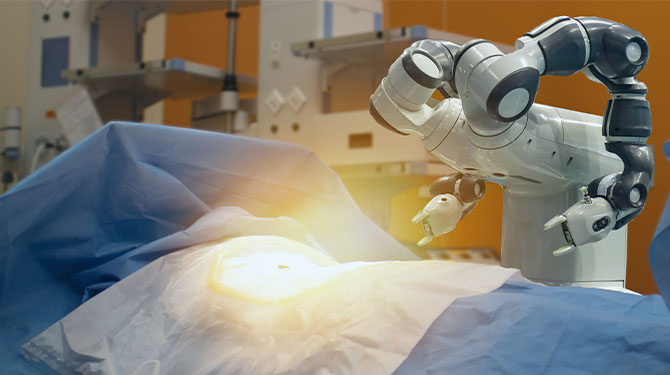Holiday Closings Notice
To view our list of holiday closures and adjusted hours, please visit our closings page.
Partial knee replacement is a minimally invasive surgery option that can postpone and potentially eliminate the need for a full knee replacement. It can also mean a shorter recovery time. More than 90 percent of our patients go home the very same day.
This procedure uses the MAKO medical robot, which uses a robotic arm and visualization techniques to prepare the knee joint for reproducible bone shaping, implant insertion and alignment – all through a minimal incision.

Although the best treatment for each patient must be determined individually, typical MAKOplasty® patients share the following characteristics:
MAKOplasty® partial knee resurfacing can:
MAKOplasty® can be performed as either an inpatient procedure or on an outpatient basis depending on what your surgeon determines is the right course of treatment for you. Hospital stays can average anywhere from one to three days. If the procedure is performed on an outpatient basis, patients return home the same day.
In many cases, patients are permitted to walk soon after surgery, drive a car within two weeks and return to normal daily activities shortly thereafter.
Like other knee arthroplasty procedures, MAKOplasty® is covered by most Medicare-approved and private health insurance providers.
Please speak with your physician to determine your healthcare benefits, and if MAKOplasty® may be the right treatment option for you.